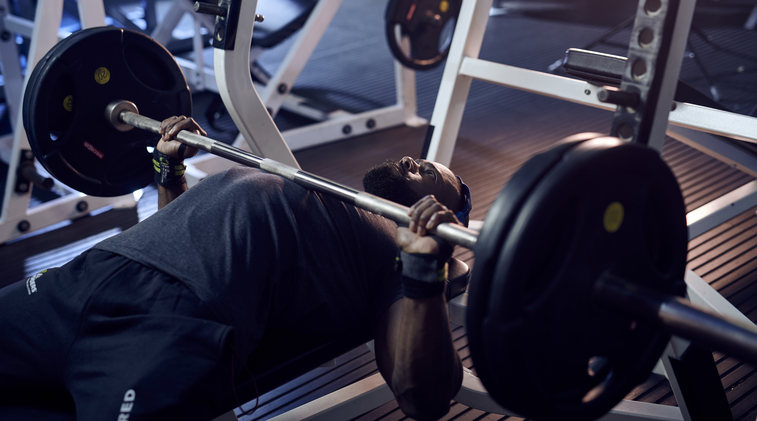Elbow pain pressing is one of the main problems gym goers experience. Common causes of elbow pain are lateral and medial epicondylitis – also known as tennis elbow and golfer’s elbow. These injuries can be extremely frustrating because our elbow is used so regularly during everyday tasks.
A big mistake that many people make when they are suffering with elbow pain is that they focus on their elbow. The thing they fail to recognise is that the elbow is a huge force transmitter between the hand, shoulder and torso. Body parts don’t work in isolation, they work together to create stability throughout your body. When you perform a press up you are not just using your pecs. You are creating a stable base at the hand/wrist on the floor, flexing/extending the elbow, abducting/adducting the shoulder and creating a stable torso. If one part of this chain is working less efficiently another part of the chain compensates in order to complete the movement. This is when you are more like to experience pain and injury.
Two common areas of weakness that may impact shoulder pain are the rotator cuff and scapula stabiliser muscles. A recent case study found that by strengthening these muscles alone had a significant positive impact on lateral elbow pain over the course of a 10-week period (1). So, by ensuring the elbow is supported by a strong, stable shoulder and torso you may be able to limit your chances of experiencing elbow pain or injury.
This may become an issue due to the imbalance between pushing and pulling exercises many people perform in the gym. Pulling exercises will strengthen the scapula stabilisers significantly more than any pushing exercise. This can create an imbalance leading to a lack of stability around a joint. Considering we spend the majority of time in anterior dominant positions such as sitting and using phones it is important to take the push to pull ratio in the gym into account when training. I generally advise my clients to aim for a pull to push ratio of 2:1 to offset the demands of daily life and general training habits.
Another area which many people fail to focus on is working on soft tissue release of the arm musculature. We spend all of your time working on our calves, quads, hamstring and back but very rarely do you ever see somebody rolling or releasing their tricep/bicep.
Below is an example exercise programme to limit or improve elbow pain. The sets and reps are next to each exercise. If you are in pain please remember you may need to seek professional advice to resolve your symptoms. I ask my clients to perform an exercise programme such as this 2-3 times per day. Those not in pain can include exercises like this during their warm ups for upper body gym sessions.
1.) Tricep Release – 2 minutes
2.) Pec Wall Stretch – 1 x 6 reps in each hand position
3.) Wall Slide & Lift Off – 2 x 6
References
About the Author
Alex Morrell (MSc, BSc (Hons), MCSP) is a Sports Physiotherapist working in international and professional rugby alongside private practice. He has a keen interest in all things training & performance from his sports science/S&C background. (@theonlinephysiocoach)



